I have played fantasy roleplaying games like Dungeons and Dragons for many years (decades?) and know what an adventure scenario looks like for those games. But how do you build a mystery a scenario for a Gumshoe game? After some research and play, here’s one way for creating a Gumshoe Mystery.
Start by writing bullet points of the crime from start to completion. Next, write your core scenes, with the six journalistic questions and five senses. Then, create your alternate and antagonist reactions scenes. Remember, the players start at the completion of the crime and work backwards.
Before we get much farther, its important to define some core terms or concepts for Gumshoe mysteries. But first, if you do not know what is the Gumshoe roleplaying game system, then click here to read all about it. The example mystery scenario I will be creating will be Esoterrorist themed, but these principles apply to any of the Gumshoe games. To learn more about the Esoterrorist setting, click here!

The first term is Core Clue. Core clues are pieces of information your investigators can obtain from a scene simply because they have at least 1 rank in an Investigative Ability. The question is not whether the Investigators get the Core Clue, but what they do with that information.
The goal of a GUMSHOE scenario is often not to complete the puzzle but to make sense of the image before the figure it reveals gets out of reach — and away with a crime.
Will Hindmarch, No Clues Without Consequences, Part 3
Clues are facts, they are not meaning. There are five distinct set of fingerprints is a clue. Who they are is another clue gained when those are later compared to a database. Or maybe only 3 of the 5 are in the database, but that’s a clue itself.
The Game Master should only give meanings if the Players are stuck on what they should do next: “You have two options. You can take the fingerprint evidence you just gathered into your police contacts, but then they’ll know what you know. Or, you can go talk to the victim’s daughter who discovered this scene, which you know from the police report you borrowed, that she is staying with friends 1/2 mile away.”
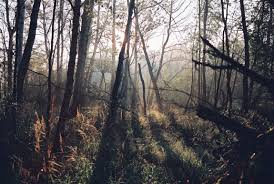
The second term is Pipe Clues. This comes from screenwriting jargon, where the clue is not immediately relevant, but relevant later. When writing scenes, you want to do so within a framework. Which scenes lead into it and which scenes does it lead too? Pipe Clues do not immediately lead you out of this scene to another one. They are laid to be used several scenes later. But Pipe Clues can be Core Clues or gained from a Spend.
It is important that you follow that framework when writing down your scenes. First name the scene. Identify the type of scene. Then list the lead-ins and the lead-outs.

Mrs. Goodsen’s Corpse
Scene Type: Core
Lead-In: The Police Station; Detective Ricky’s Apartment
Lead-Out: The Crime Lab; Lana Goodsen’s Friends
As a table aide or prop, you may even want to use 4×6 Index Cards. Write the name of each of your scenes on a card, but not the other pieces (too inside baseball). Write each core clue factoid on another index card. As the players enter the scene, throw the card into the middle of the table. They can take notes. Then hand out the clue cards.
I would definitely do this for new groups. Then over time, only do the scene cards, but have blank 4x6s ready. The players can write down their own clues. If you want to be really fancy, get some corkboard and push pins. Let them pin and arrange the cards to understand the evidence.
The Six Questions of Journalism
Journalists are detectives. They are taught to ask six questions: Who, What, When, Where, How, and Why. As you write your mystery overview, you should try to include answers to each of the six questions. This will give you a good sense of the broad strokes and themes of the mystery. You may never explicitly reveal the answers from your outline, but helps put your mind within the world of your game.
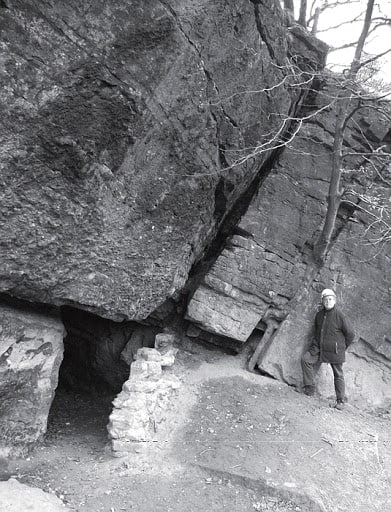
As you write your individual scenes and create your clues, do so within the context of these six questions. Don’t overdo it. Not every scene needs to have clues that answer each of these questions. If your struggling to create at least a small handful of clues in a scene, come back to these questions.
What the features of The Esoterrorist setting is a game master’s ability to rip stories from the headlines, then adapt them into a Mystery scenario. As I was writing this article, one such headline came across my news feed, “U.S. soldier plotted with a satanic neo-Nazi cult to stage ‘murderous ambush’ on his unit.”
Reading this story from The Washington Post further, this US Soldier became involved with a UK group called Order of Nine Angels (O9A). The Anti-Hate group, Hope Not Hate, has an article about O9A here (warning: the descriptions of O9A activities show they are an extremely perverse, transgressive group). From the Hope Not Hate article, it describes O9A as follows:
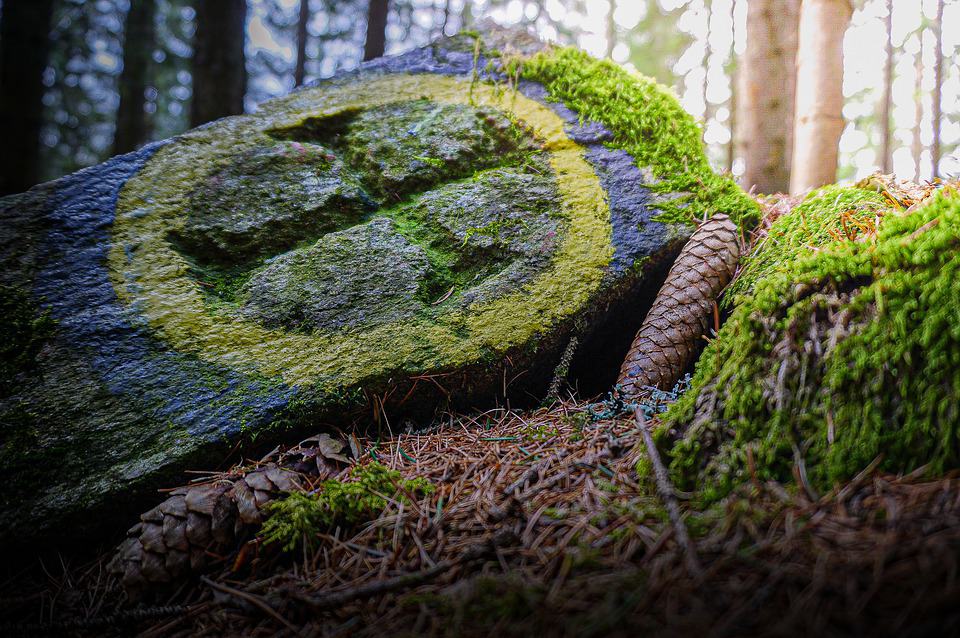
In brief, O9A seeks to harness supernatural forces and overthrow the alleged “Nazarene/Magian” (Jewish) influence on society, reduce the population of “mundanes” through acts of extreme barbarism, and usher in a new imperial aeon (age) ruled by a race of Satanic supermen who would colonise the solar system.
Hope Not Hate
Consent
Esoterrorist Mysteries can be dark. The write up by Hope Not Hate of the O9A describe many dark, transgressive acts done by this group. I strongly recommend that you do not describe these scenes on-camera. Describing on-going scenes or murder, sexual assault, and torture is going to be traumatic for you and your players.
My current player group includes 5 teens and pre-teens. I am not sure I would play the Esoterrorists with this group as its themes are too dark. If I wanted to play a Gumshoe game with them, then Bubble Gumshoe or Timewatch are lighter themed settings.
Prior to playing any Esoterrorist game, you should talk with your players about which themes they can and cannot tolerate. You should also discuss which themes they are ok with off-camera versus on-camera. Do not ask any player to explain why they are not OK with certain themes. You are not their therapist. Just accept it and move along.
Then during play, have an “X Card” on the table (or several) within reach of the players. If you’re describing or moving into a topic that is triggering a player (something they did not previously realize would be triggering), the player can simply tap or hold up the “X Card”. It is literally a 4×6 Index Card with a large black X drawn on it.
When it is tapped, you stop and find a different way of moving forward. Only if 100% necessary, take the player aside and inquire what was triggering. Finding a different way forward will not necessarily be easy, but it is necessary. If it is tapped in response to another player, then that player needs to do the same thing. If that player persists, pull that player aside (not the X-Card Tapper) and talk to them about finding a different path.
Playing roleplaying games is supposed to be fun for everyone at the table. There are many different ways to have fun. But we should be protective of that fun, to ensure each and every one of us are having fun. No theme, story element, or player action is more important than triggering a player. If you need to read more about the very important topic of Consent in Gaming, click away.
Operation Ambush
The Mystery almost writes itself from here. To keep things geographically simple, we’ll transplant O9A into the US from the UK. Let’s start with the Chronological bullet point overview:
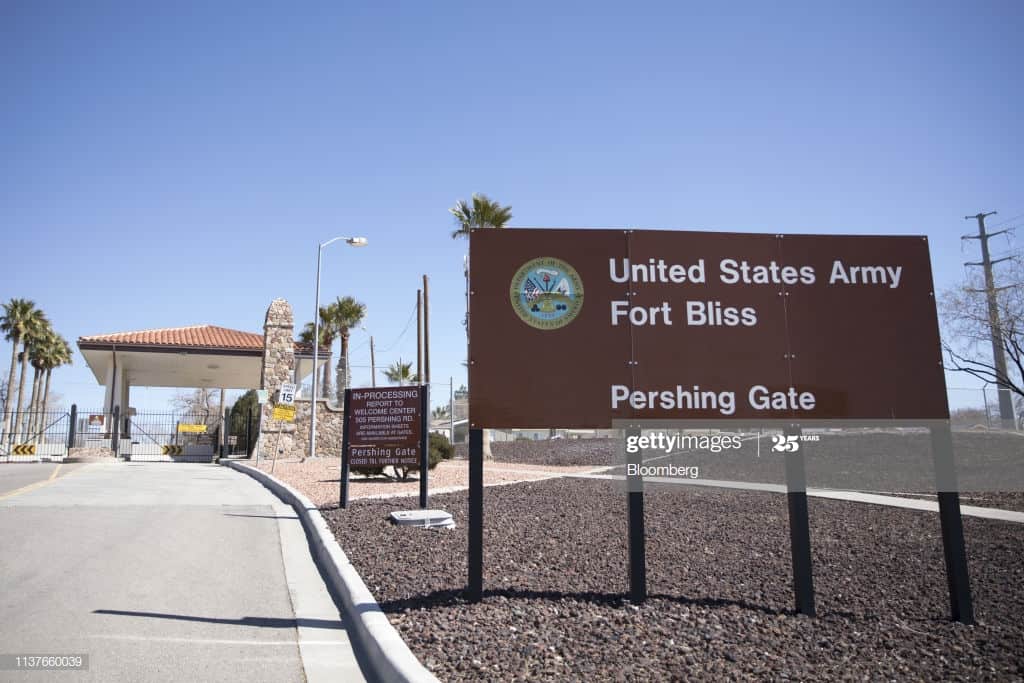
- PFC Ethan Melzer is stationed at Fort Bliss, El Paso, Texas.
- About 1 year prior, he starts reading white supremacy literature and becomes radicalized.
- 6 months ago, he searches local white supremacist groups and finds the O9A. He meets with Anton Long, the local cell’s leader. Long is an alias for David Myatt.
- Long works with (for?) an Outer Dark Entity called a Returner who appeared as part of a ritual sacrifice. The Returner is promising magical powers to Long.
- Three months ago, Melzer is inducted into O9A through committing a ritual sacrifice.
- Since then, Melzer has participated in culls with other members of the O9A committing acts of predation and terror in the rural communities along the New Mexico-Texas border.
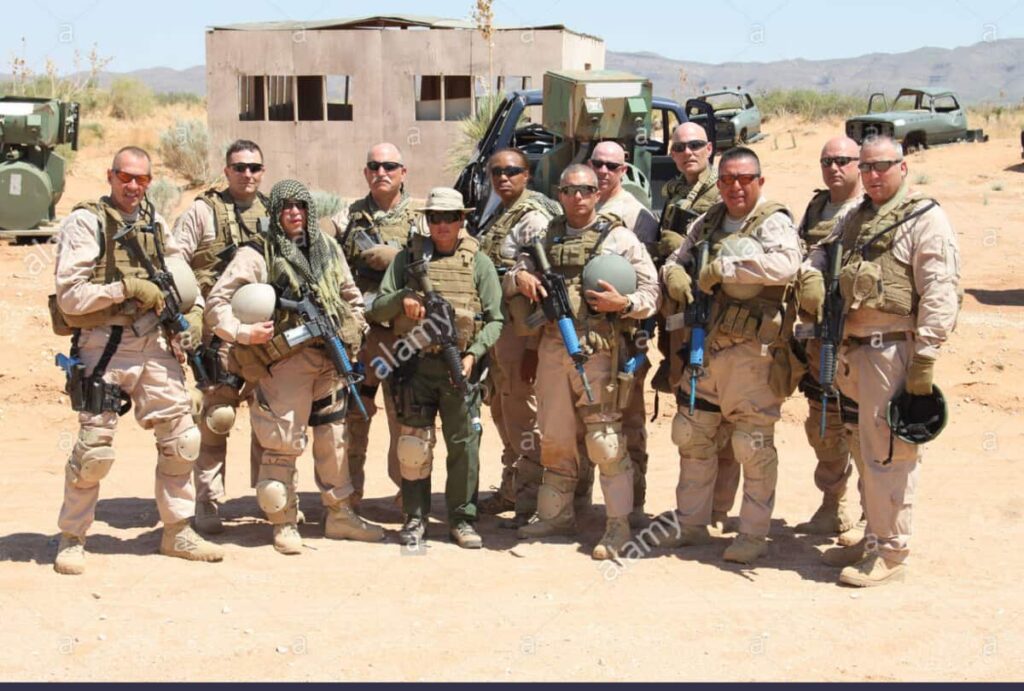
- Mezler has tried to recruit members of his squad, but they have resisted and ostracized him. Fearing he would be turned in, he then conspired with Long to have his squad ambushed by O9A members while they were doing a patrol exercise/training on Fort Bliss.
- Mezler’s electronic communications of these plans were done on-base. This allowed federal authorities to intercept and arrest him 7 days ago. When reviewing his reading and web history, the occult nature of the O9A resulted in activating The Ordo Veritatis.
- 3 days ago, Mezler committed suicide (hanging) inside of his jail cell, despite precautions.
Ms. Verity’s Briefing
From this outline, the Game Master can then prepare the briefing that leads to the introductory scene(s) of the Investigation. Once Ms. Verity activates the OV team, what does the OV know about the situation? What makes the OV think this is something that requires their attention, not just something for local, federal, or military law enforcement?
- Web history shows him reading occult sites known by the OV as passive recruiting opportunities for a well-entrenched Mother Cell of Esoterrorists.
- Transcripts of interviews with his squad members that Mezler was into occult topics and engaged in magical thinking. But the local FBI did not spend much time asking follow up questions on those lines of inquiry.
- Tattoos on Mezler’s body, but any attempts to photograph them results in corruption of the file.
- An uptick in missing person cases in the region.

Each of these clues from the briefing will point to several Core Scenes for the Investigators:
- The County Morgue to inspect Mezler’s corpse and those tattoos.
- FBI Field Office, El Paso, Tex. to talk to the special agents and review their evidence files.
- County Jail to talk with guards, inmates, and inspect the jail cell.
- Fort Bliss to talk with his squad.
Introductory Scenes
You should also decide how widespread the O9A is in El Paso. Obviously, Mezler didn’t hang himself. Therefore, someone at the jail or who had access to the jail is a member of the O9A. But the Returner needs a fresh corpse to feed on, is Mezler’s corpse missing now too?
As an aside, in the Esoterrorist book, they have an example Mystery. For each scene, they write out several column-inches of expository text. If you’re so inclined, you could do the same. But, that is a tool for communicating information from a writer to a reader who are not the same person. I don’t think you need to do the same level of detain in your write up. Instead, focus on the six journalistic questions.
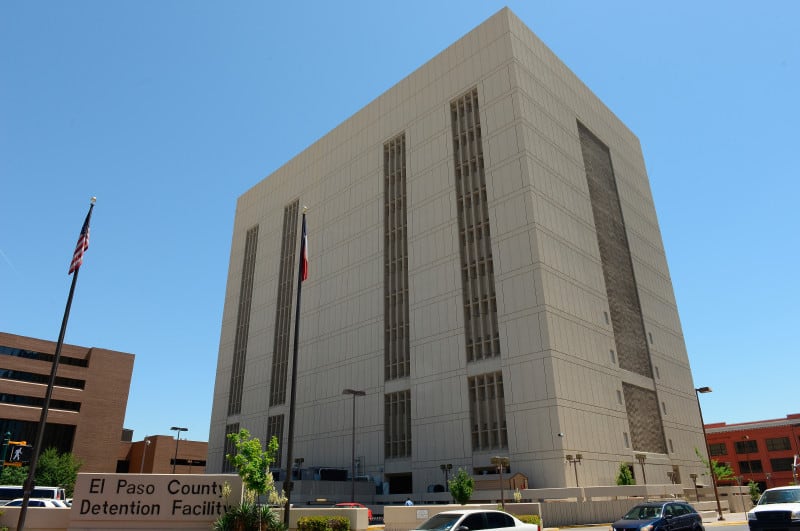
El Paso County Jail
Scene Type: Core
Lead-Ins: The Briefing
Lead-Outs:
For now, I have the lead-outs blank, because I haven’t figure that out yet. Once you’ve written the Core Clues, then that will suggest to you lead-out scenes. Of course, there should be some sort of link between The Morgue and the County Jail as there should be an obvious local law-enforcement connection:
El Paso County Jail
Scene Type: Core
Lead-Ins: The Briefing, The Morgue
Lead-Outs: The Morgue
The next step is to either write your Core Clues or list the Investigative Abilities relevant. I prefer to write the Core Clues and list the likely Investigative Abilities that will reveal those clues. Now just like with the over-arching plot, I write a basic narrative of what happened at each scene that is the crime or the cover-up:
- Lieutenant Grayson (I’m terrible at names) is a member of the O9A and has been for several years. He feeds information of newly released inmates to the O9A for recruits or victims.
- In additional to being a satanic neo-nazi, Lt. Grayson is also a misogynist who doesn’t like Officer Eaton, because he doesn’t think women should be Sheriff Deputies.
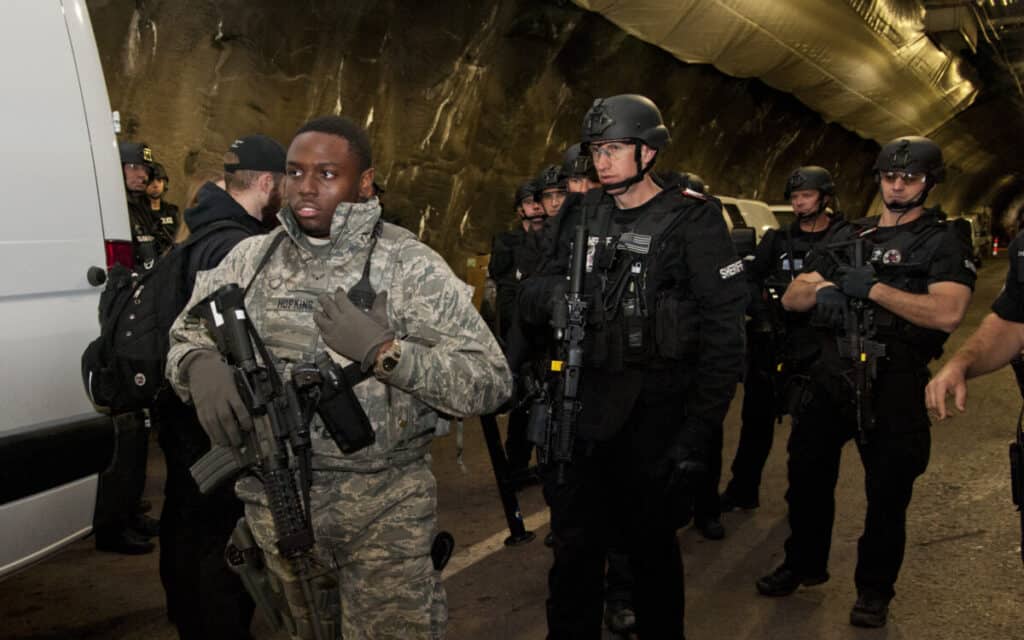
- The night of the murder of Melzer, he entered the IT office, saved the clip of Officer Able’s patrol. Emailed it from the Technician Feliciano’s personal gmail account (he left it up) to a technically savvy O9A member, who altered the time stamp.
- Lt. Grayson then spliced it over the video of that hour, hiding the fact that he entered Melzer’s cell between the two patrols.
- Lt. Grayson tore out the page or took the log book and planted it in Officer Eason’s locker.
Here are some What Happened Core Clues, which also give When Did It Happen clues:
- Lights out is at 10 pm. Guards start their patrol to ensure lights are off starting at 10:15 pm. It takes 45 minutes to patrol the entire jail. The patrol happens again at 11:15 pm. After that, it’s every-other hour until 7 a.m. Shifts are changed at 11 pm and 7 a.m. Cop Talk, Bureaucracy, Flattery.
- For prisoners on suicide watch, their cells are checked every 30 minutes if they are awake, every hour once they are asleep. Cop Talk, Bureaucracy, Flattery.
- There is a log book signed after each patrol that verifies the patrol was done. The log book for that night is now missing (or maybe the page for that night is torn out). Cop Talk, Bureaucracy.
- The log book or missing page is in Officer Eaton’s locker. Evidence Collection.
- Closed Circuit video records all areas outside cells. It shows an officer checking Mezler’s cell at 2:25 a.m. and walking by. It shows the same officer checking at 3: 29 a.m. walking by. It shows a different officer walking by at 4:22 a.m., stopping, pulling out a radio, opening the cell door, and a minute later several more officers running into the cell.. Cop Talk, Bureaucracy.
- The video has been altered. The 3:29 a.m. check in is a loop of the 2:25 a.m. check in, but the date stamp has been altered. Photography.

There are several more What Happened clues that could be given here. None of these suggest that a spend will get anything more. The possible exception is a Photography Spend to get more details about the alteration. The next important piece is the Who Was Present or Who Had Access to the log book and video. Most of these are Cop Talk Core Clues.
- Officer Able (Did I mention that I’m terrible at names) is seen on the 2:25 a.m. and 3:29 a.m. check-ins.
- Officer Baker is the one who discovered Mezler’s body hanging by sheets tied into a rope.
- Captain Charlie is responsible for the log book, but each book covers one month. The practice has been to leave it out, unsecured, in the duty room. Anyone has access to it. The duty room camera has been broken for a month or more.
- Sgt. Durango was in the Command Center that night watching the feeds. He doesn’t remember seeing anything unusual from the cameras. Cop Talk Spend: It was Officer Eaton’s turn to do the suicide watch patrol at 3:29 a.m.
- All of the camera feeds are recording and kept for six months. They are stored in Technician Feliciano’s office. He’s their IT guy. The Captain and Lieutenants all have keys to get into the IT Office.
- Lieutenant Grayson was not on duty that night. It was Lieutenant Howard, who denies entering the IT office. Cop Talk, Flattery, Reassurance, Bullshit Detector.
- Cop Talk, Interrogation, Intimidation or Bullshit Detector Spends will reveal that Sgt. Durango was covering for Lt. Grayson. Durango also doesn’t like Officer Eaton and thinks women shouldn’t be on the force. Lt. Grayson stopped in saying that during Eaton’s next patrol, he was going to play a practical joke on her locker.
The level and breadth of detail is up to the individual Game Master. If they are not good at improve, then obviously more is better. A more improvisational Game Master needs less prepared in advance.
The other thing the Game Master must decide is whether most of these clues are actually Pipe Clues or Core Clues. In other words, are the Investigators being given enough to draw conclusions that it was definitely Lt. Grayson and not Officer Eaton in this scene? If yes, then these are core clues and more needs to be added to make Lt. Grayson a person of interest at the conclusion of the scene.

If the Game Master wants to keep the question of Lt. Grayson or Officer Eaton or Technician Feliciano as the real perpetrator, then these are more Pipe Clues. But you will have to lay out parallel pathways of what each person was doing or trying to do that appears suspicious and subject to a Bullshit Detector clue. It is only when they find a clue in later scenes where they have the possibility of figuring out who is the red herring.
Remember, your later clues do not have to be definitive that these are red herrings. It is not your job as the Game Master to help the Players interpret the clues. The tricky part is Bullshit Detector. As written it is a binary ability (lying or not lying), with the possibility of false negatives:
This sense doesn’t tell you what they’re lying about, specifically, or see through their lies to the truth. . . . Certain individuals may be so adept at lying that they never set off your bullshit detector. Some people believe their own falsehoods.
Bullshit Detector Description, The Esoterrorists, 2nd Ed. p. 11
Where you can get into trouble is if you have two many Non-Player Characters (NPC) and do not have well organized notes. But not all scenes are going to have so many people as a County Jail.
The Five Senses
The other piece to not just clue writing, but any writing, is to include the five senses in your clues: sight, smell, touch, taste, and hear. Sight will be the go to sense. You should also combine the sense with a journalistic question. The trick will be varying the Investigative Ability.

- As you talk to Officer Eaton in her living room, you notice the perfume that she is wearing. It matches the unsigned letters in Mezler’s Go Bag. Evidence Collection.
- As you enter the room, the small of of fear, sweat, and unwashed bodies nearly overwhelms you. You also notice an external lock on the door, with no door knob on the inside of the door. Evidence Collection.
- As you inspect the symbols drawn on the wall, you reach out to trace it with your finger. That’s why you release the ink is still wet and unusually hot. Occult Studies.
- As you walk around the room, something seems off with dimensions of the room. As you tap on the on the drywall, you can hear a difference in the echo/sound of the West Wall. Architecture. Spend: As you walk around the outside of the house, you’re pretty sure there is a secret space or room behind that wall.
As you craft and connect your scenes, keep in mind the three act structures of these stories: Beginning, Middle, and End. However, pacing and structure can be difficult to maintain as Players take unanticipated actions. The Esoterrorists book identifies additional scene types:
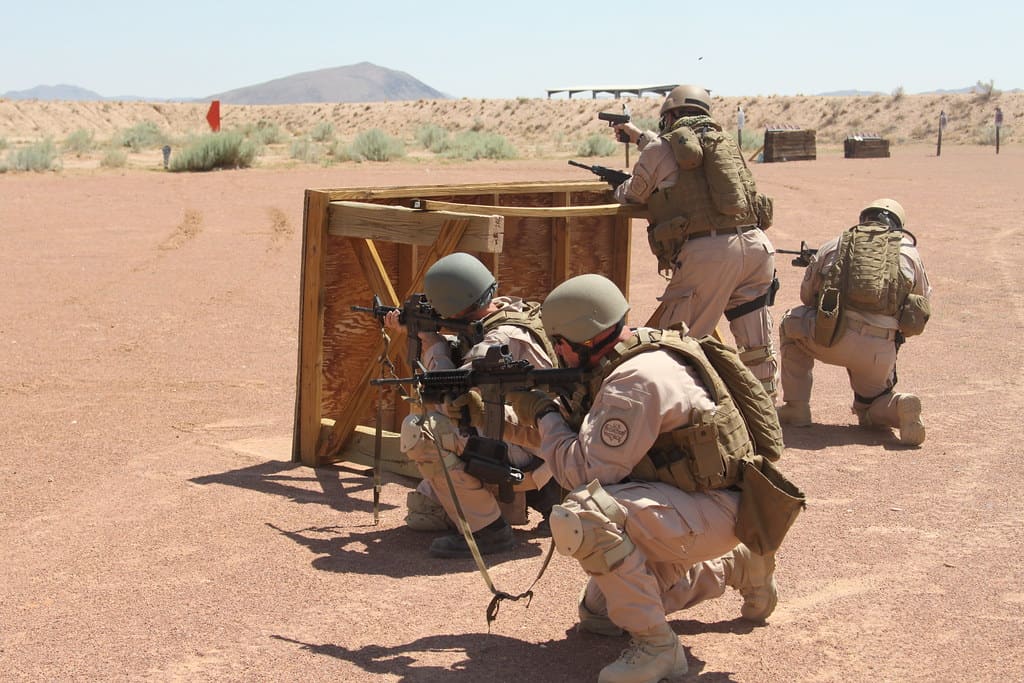
- Alternate: These scenes flesh out the world of your game and mystery, they may help the Investigators draw additional connections, but are not necessary to solve the mystery.
- Antagonist Reaction: These are scenes where the Antagonists, aware of the Investigators on their tail, take actions against the Investigators. This could be a fight scene, the planting of evidence where local law enforcement targets them, or rumors that turn the locals against them.
- Hazard: This is a scene with an environmental hazard, traps, and dangers requiring General Abilities tests.
- Conclusion: Obviously the end or maybe just the beginning of the end. These are scenes where the final moves of the chess game occur. Either the Investigators solve the Mystery and capture their subject or they disrupt the cell, whose members scatter.
Insights from Other Games
Gumshoe is a very different system. It is important to understand it on its own terms. But that doesn’t mean we can’t use concepts from other systems or advice for other systems in preparing your Gumshoe Mystery.
Dungeon World Fronts
Dungeon World is a Powered by the Apocalypse (PbtA) game. If you want to learn more about PbtA as a system, come click away. One of the best concepts from Dungeon World that is importable into any other game system is the idea of Fronts.
Fronts are designed to help you organize your thoughts on what opposes the players. They’re here to contain your notes, ideas, and plans for these opposing forces.
Dungeon World, p. 185
At their core, Fronts are what the bad guys in your story are doing so long as your players don’t bother them. It’s identifying what their next 2-3 moves or actions will be and what signs (evidence) are created when they achieve those goals.
By writing the story of your mystery from the start of the plot to the culmination of the plot, the Front is what your antagonists are doing next and again after that. This creates the tension for the Investigators as they’re entering the middle of the story, but then must work backwards and forwards.

Generally, in most Mysteries or scenarios there is only one group of bad guys. In Dungeon World, they suggest having 2-3 Fronts (groups of bad guys) to create tension for the players: all these bad things are happening and we can only stop one, but which?
For Gumshoe, I still think there should be 3 Fronts, but 2 of them are red herrings. Just because they aren’t criminal, it doesn’t mean these other individuals or groups can’t do something that interferes with your Investigators. They have stories that are running parallel or perpendicular to your main story.
The Lazy Dungeon Master: Secrets and Clues
Two of my favorite Dungeon Master advice books are The Lazy Dungeon Master and Return of the Lazy Dungeon Master by Mike Shea. The former was written for 4th Edition Dungeons and Dragons, the latter for 5th Edition. In Return, he talks about this concept of creating Fantastic Locations and a list of 10 Secrets and Clues.
This sounds a lot like creating Scenes and Core Clues. What is different is that in Return, there is no direct connection between the Fantastic Locations and the Secrets/Clues. Instead, these are used improvisationally, by letting the game happen, following player choices. You then drop the secrets whenever and wherever seems appropriate.
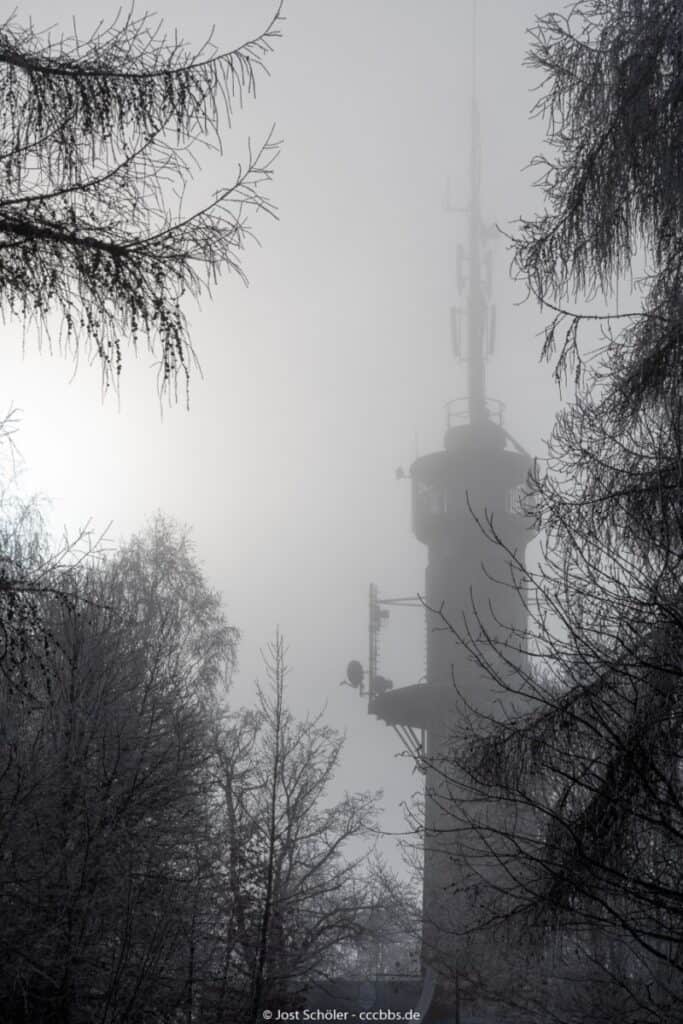
But in Return, you do not need to use all 10 of the clues in a session or any of the locations. You are simply preparing to improvise. Furthermore, you are advised to get rid of the unused locations and clues at the end of the session, writing a new set before the next session. If the clue is important or enduring enough, you’ll think of it again and write it down again.
Gumshoe has a similar type of clue, the Floating Core Clue. These are not tied to a particular scene, but is information that can be gleaned in a number of different ways. I think of it has information, maybe even important, mystery-defining information but stripped of its context. It is a clue without a pre-defined set of Investigative Abilities set to it.
Above, I used the clue where there is a secret, interior room built into the house. I used the sense of hearing and Architecture as a way of giving that clue. But if that secret, interior room is an important scene, then the existence of secret room could be found in any number of scenes:
- A member of O9A has been captured and that secret room is discovered using interpersonal skills like Reassurance, Interrogation, Intimidation, or Flattery.
- An Investigator is trying to infiltrate the O9A or finds one of its members drunk at the bar, using Flirting to obtain it.
- An Investigator goes into the County’s records department, using Bureaucracy, obtains the original blueprints filed to get the building permit. In the alternative, you hack into their database using Data Retrieval to obtain the blueprints. A later trip into the house makes is quickly clear the interior has been remodeled with Architecture.
- After determining two members of the O9A, you infiltration and plant bugs in their home or establish a wire tap on their phones. Electronic Surveillance picks up the two of them talking about the secret room.
- An Investigator Impersonates someone from the IRS. They obtain the tax returns of the homeowner from their CPA. Forensic Accounting shows they used the expenses of constructing that secret room as a tax write-off.
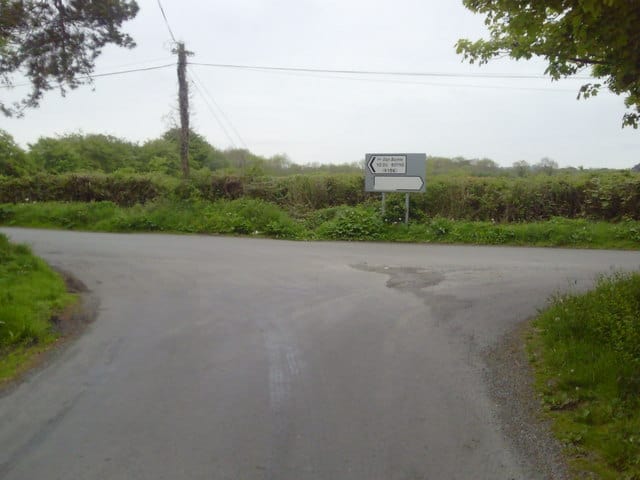
The bare, necessary information was the existence of the secret room. Maybe that is where the Outer Dark Entity, the Returner, nests. Therefore, it is essential the Investigators discovery the rooms existence.
Moving and inventing clues, informed by the backstory as the GM knows it to be true, is where adventure or scenario design meets play and the adapted, remixed story unfolds through collaboration.
Will Hindmarch, No Clues Without Consequence, Part 4
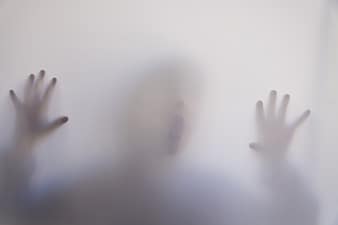
But as a Floating Core Clue, just like in Return of the Lazy Dungeon Master’s Secret and Clues, you decide when to give them that information. Most Investigators, if they find out about a secret room inside a suspect’s house, will make a beeline for it to find what they’re hiding.
Who knows what sort of “fun” they’ll encounter. Maybe the ODE has friends? Those friends love new playmates like the Investigators.
Read-Aloud Text
Finally, one of the concerns I’ve read a lot online about Gumshoe Investigations is that players will just “spam” their investigative abilities each scene. This is a valid concern as it can break immersion and the 4th-wall of the game. For new players, they may be tempted to do this as they don’t yet have a feel for the flow the of the game.

One way of channeling that impulse is to prepare read-aloud text for each scene. For those who don’t know, in many if not most Dungeons and Dragons pre-published adventures (modules), they have read-aloud text for a dungeon, room, or area:
The entrance to the cave ends here at a 10-foot drop-off. To your right, broad steps are roughly hewn into a natural stone ramp. The cavern below is carpeted with a profusion of fungi ranging from a few inches high to nearly as tall as a human adult. Two paths lead through the fungi: one on the right and one on the left.
Horde of the Dragon Queen, Wizards of the Coast.
We can take a similar option for Gumshoe scenes. The first step is using Pelgrane’s excellent resources, which include this handy worksheet for keeping track of your player’s investigative abilities. Write read-aloud text with those Investigative Abilities in mind:
As you enter into the backroom the first thing you notice is the smell of old blood and feces. The second is the sound of bugs. Madeline, with your Forensic Etymology, you immediately know the body you see against the back wall has been dead from somewhere between 48 to 72 hours. Bill, with your Forensic Pathology, you can quickly see the cause of death was likely blunt force trauma to the skull, but it never hurts do a more detailed autopsy.
I wouldn’t pick more than 2 or 3 Abilities for the read-aloud. You’re inviting them into the scene and placing their investigative abilities within the context of the scene. You can also use this invite a spend, e.g. autopsy, to gather more information. There may be other Core Clues, but let them explore and you’ve invited them into the scene.
I also like to place the Investigative Abilities or Spends in bold, to draw my eye while I scan and read mid-game. But you knew that, because I’ve been doing that throughout this Article. It helps me draw associations between what players are saying on the table and my notes.
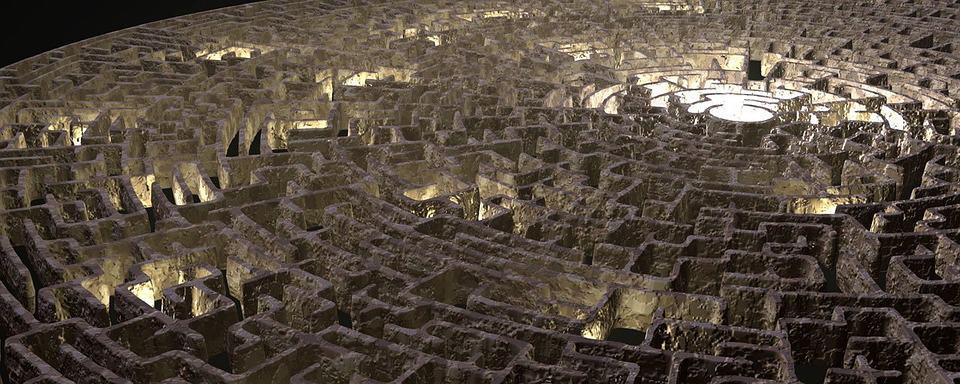
In brief summary, writing a compelling Mystery can be fun. It’s like putting together a clock, with all of its interlocking gears. But that can also be overwhelming if you make it too complicated. If you find yourself overwhelmed, use the Rule of Three:
- No more than three core clues per scene
- No more than three Lead-Outs from a scene
- No more than three speaking, clue-giving Non-Player Characters per scene.
While harder to precisely map out, I would not have more than three scenes at the same stage of the investigation. Also, try not to have more than six (2×3) to nine (3×3) scenes from the Introductory to Conclusion scenes, assuming the Investigators go in a straight line. Don’t make it so complex that you or your players lose track of where they are.
If you want some links on where to buy Gumshoe books, it can be found over here.
If you want to explore the wilder (and wider) world of tabletop roleplaying games go there! If you want to start to learn on how to paint miniatures, click already! Or maybe you want to read more of my posts about Dungeons and Dragons, then click away here!

